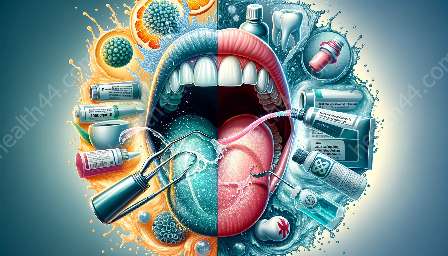Chlorhexidine mouthwash has long been used in dental care, but its effects on various dental restorations are a topic of interest. Understanding how chlorhexidine interacts with different dental materials can help in making informed decisions for oral health.
Chlorhexidine Mouthwash and Its Properties
Chlorhexidine is a broad-spectrum antimicrobial agent commonly used in mouthwashes and dental rinses. Its ability to reduce plaque and gingivitis makes it a valuable component in oral hygiene regimens. However, its effects on different dental restorations are important to consider.
Effects on Composite Fillings
Composite fillings are widely used for dental restorations due to their natural appearance and adhesive properties. Research suggests that prolonged exposure to chlorhexidine mouthwash may cause discoloration or surface changes in composite fillings, affecting their aesthetic appeal.
Impact on Amalgam Fillings
Amalgam fillings, composed of a mixture of metals, are known for their durability. Studies indicate that chlorhexidine mouthwash does not have a significant impact on the integrity of amalgam fillings. However, it is advisable to follow dental professional recommendations for maintaining oral hygiene with amalgam restorations.
Interactions with Ceramic Restorations
Ceramic restorations, such as crowns and veneers, are popular for their natural look and strength. Chlorhexidine mouthwash is generally well-tolerated by ceramic materials, with limited evidence of adverse effects on their surface or structure.
Effects on Dental Implants
Dental implants require careful maintenance to ensure their longevity. While chlorhexidine mouthwash can effectively suppress bacterial growth around implants, prolonged use at high concentrations may lead to complications such as surface corrosion. It is important to use chlorhexidine mouthwash as directed by dental professionals.
Considerations for Other Restorative Materials
It is essential to consider the effects of chlorhexidine mouthwash on other materials used in dental restorations, such as gold alloys, resin-based composites, and glass ionomer cement. Research indicates varying degrees of susceptibility to chlorhexidine, highlighting the need for personalized oral care recommendations based on individual restorative materials.
Conclusion
Chlorhexidine mouthwash plays a significant role in maintaining oral health, but its interactions with different dental restorations should be carefully considered. Understanding the effects of chlorhexidine on composite fillings, amalgam fillings, ceramic restorations, dental implants, and other materials can guide patients and dental professionals in making informed decisions for oral hygiene practices.









